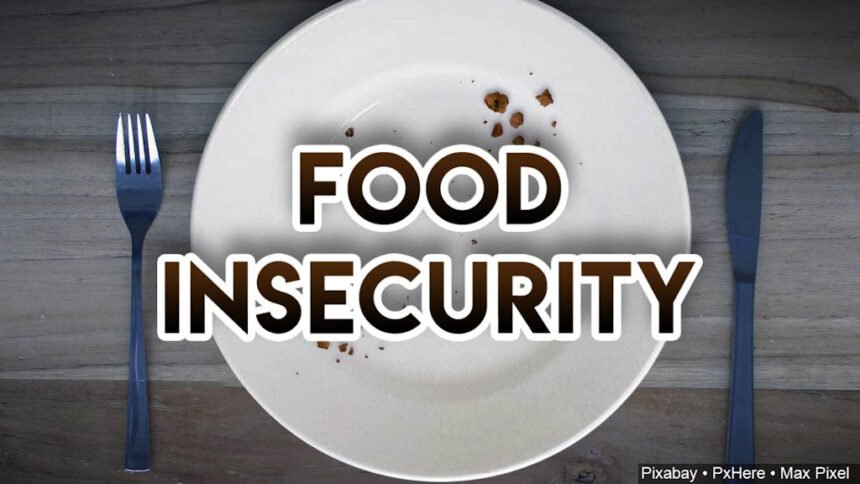About 1 in 4 Oregonians have experienced food insecurity this year, OSU report says

CORVALLIS, Ore. (KTVZ) — An estimated 1 million Oregonians — close to 1 in 4 people — experienced food insecurity this year, meaning they had a disruption in their ability to feed themselves or their family, a new report from Oregon State University researchers found.
After the Great Recession, rebounding employment numbers and efforts by Oregon safety net programs helped bring the food insecurity rate down to around 10% of households statewide by December 2019.
But according to the new report, the COVID-19 pandemic and accompanying employment crisis quickly erased all those gains and brought food insecurity up to at least double what it was a year ago, with Black, Hispanic/Latino and Indigenous households especially hard-hit.
“Here we’d been really improving and getting to historically low levels of food insecurity, then suddenly all that got reversed in a very short time, and the new number is extraordinarily high,” said report author Mark Edwards, a sociology professor and director of OSU’s Policy Analysis Laboratory in the College of Liberal Arts.
Researchers measure food insecurity by asking people questions such as if they have to cut down the size of their meals to stretch their food budget, or if they ever have to skip meals or go a day without eating.
Low-income households, households struggling with unemployment or reduced hours, and single-mother households are most likely to experience food insecurity, Edwards said.
The OSU report used the Current Population Survey to measure food insecurity until December 2019, and filled in 2020 data by estimating based on current unemployment numbers.
Even when Oregon’s overall food insecurity rate was at a record low, that improvement in access to food did not extend to all communities equally. Roughly 20% of Black, Hispanic/Latino and Indigenous households experienced food insecurity in December 2019, compared with 10% of the white population.
“So now, if you imagine that our food insecurity rate has doubled, then there’s every reason to believe that the number for people of color has doubled into the 30% range — and I’m being really conservative when I say that,” Edwards said. “It’s likely well north of 30%.”
Greater food insecurity stems from other systemic inequities, including higher rates of poverty, unemployment and underemployment among people of color.
Based on available data, Asian households are more in line with white households in their rate of food insecurity, though the data does not break down into sub-groups.
Food insecurity has far-reaching ramifications for physical and mental well-being, Edwards said.
“Worrying about being able to feed your family and having to make choices that you know are not the healthiest for you and them, cutting meals or portions — this is not how any of us want to live,” he said.
Though more people are struggling to put food on the table, Edwards said Oregon’s safety net programs quickly jumped into action when the pandemic first struck.
State agencies like the Department of Human Services and nonprofit organizations like the Oregon Food Bank and Partners for a Hunger-Free Oregon were already well-practiced in making sure anyone eligible for SNAP (Supplemental Nutrition Assistance Program, formerly food stamps) could get signed up and start receiving food assistance quickly.
Twenty years ago, Edwards said, Oregon’s food insecurity rate was one of the worst in the nation, but collaboration among state agencies and nonprofits helped turn it around.
Those efforts continued this year, with programs like using school buses to deliver meals to kids who were receiving free/reduced price school lunch at in-person school. Oregon piloted the Pandemic EBT program, which helped to quickly get financial assistance to families whose children had been receiving free/reduced price school lunches.
“We were well-positioned to do things like that, because we’re used to being innovative and proactive when it comes to addressing food insecurity,” Edwards said.
As the pandemic continues, Edwards will be following up with other food insecurity reports, including a survey of OSU students that will be completed in the coming months.